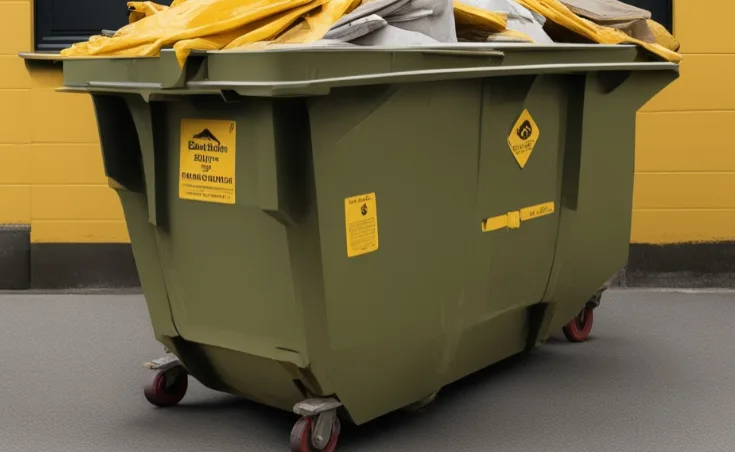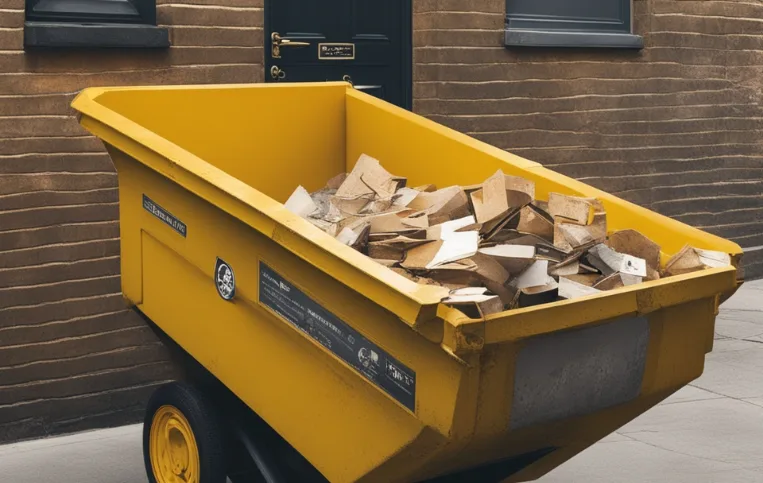How to Effectively Use Space within a Skip
When hiring a skip, one of the main concerns is ensuring you make the most of the space provided. Properly filling a skip not only maximises value for money but also ensures that waste is managed efficiently. With everything from mini skips to jumbo skips, you should easily be able to secure the right-sized skip for your job with us - read our guide on choosing the right size skip to see more!
At Taylors Skip Hire, we believe in offering our customers more than just a service - we have one of the most comprehensive skip hire guides online! Here are some top tips to help you use your skip space effectively:
1. Load the Heaviest Items First
Starting with the weightiest items ensures that they form a solid base at the bottom of the skip. This prevents them from damaging lighter items or taking up unnecessary space at the top later on. Think of large furniture parts, broken-up concrete, or old bathroom suites.
2. Crush Smaller Items if Possible
Before placing items into the skip, see if you can compress or crush them. Flattening cardboard boxes, breaking down old furniture, or even tearing up old carpet can help in saving a significant amount of space.
3. Know What Can and Can't Be Disposed of in a Skip
It's crucial to be informed. Certain items, often hazardous or toxic, can't be disposed of in a regular skip. By ensuring that you're only placing allowed items inside, you prevent potential safety hazards and added costs for sorting and disposal. Familiarise yourself with the rubbish that is allowed in a skip before you start loading.
4. Hire a Skip That is Big Enough
While it might be tempting to save a few pounds by hiring a smaller skip, it's vital to accurately estimate the size you'll need. If you're unsure, it's better to err on the side of caution and opt for a slightly larger size. This prevents the inconvenience and expense of needing a second skip later on. If your skip is overloaded, you may face extra charges or be asked to remove items from it before it's taken away.
5. Load in Order
A systematic approach can help you maximise every square inch of the skip:
- Flat Items First: Begin with flat items like broken-down furniture pieces, doors, or planks. This creates a level base.
- Items that Fit Together Next: Materials like bricks, tiles, or any objects that can fit into each other should be placed next. This reduces gaps and pockets of wasted space.
- Large Bulky Items: After the flatter materials, move on to bigger items that can't be neatly put next to each together. Their bulk can be offset by the orderly base you've created.
- Finish with Loose Debris: Finally, pour in any loose debris, soil, or rubble. These can fill in any remaining nooks and crannies, ensuring a snugly packed skip.
Efficiently packing a skip is both an art and a science. By following these guidelines, you can ensure you get the most out of your skip hire, making your waste disposal project both economical and efficient. And remember, if ever in doubt about skip sizes or what can be disposed of, the Taylors Skip Hire team is always here to assist. Your waste management couldn't be in better hands!
Taylors Skip Hire covers a wide service area, offering skip hire, rubbish removals, and clearance solutions in Tandridge, Whyteleafe, Betchworth, Kingswood, Burgh Heath, Walton-on-the-Hill, Mugswell, Irons Bottom, Westerham, and Lingfield. We're proud to be your local waste experts - offering dependable support for homes, businesses, and trade clients year-round. Contact us to get started.



